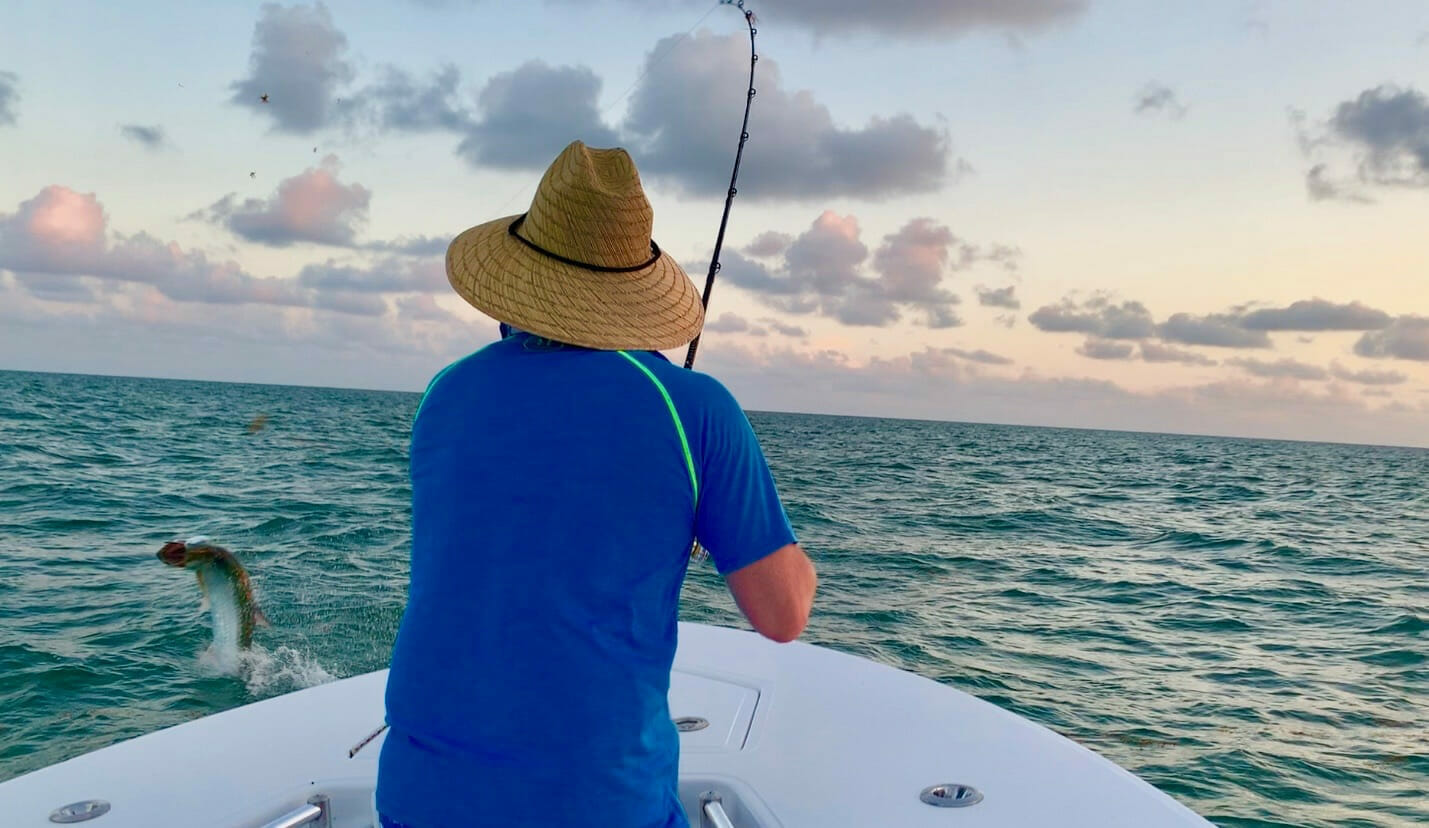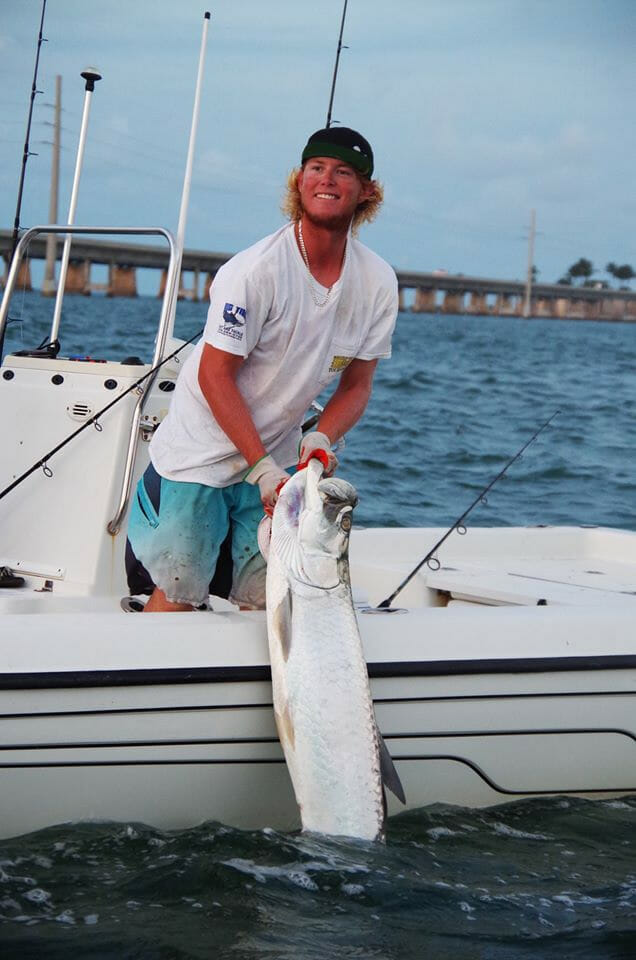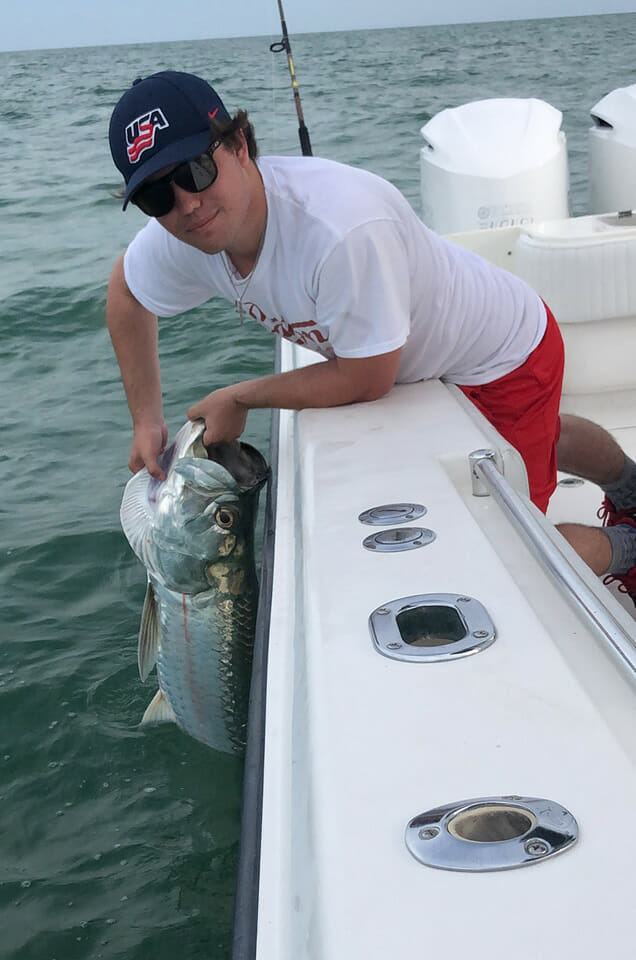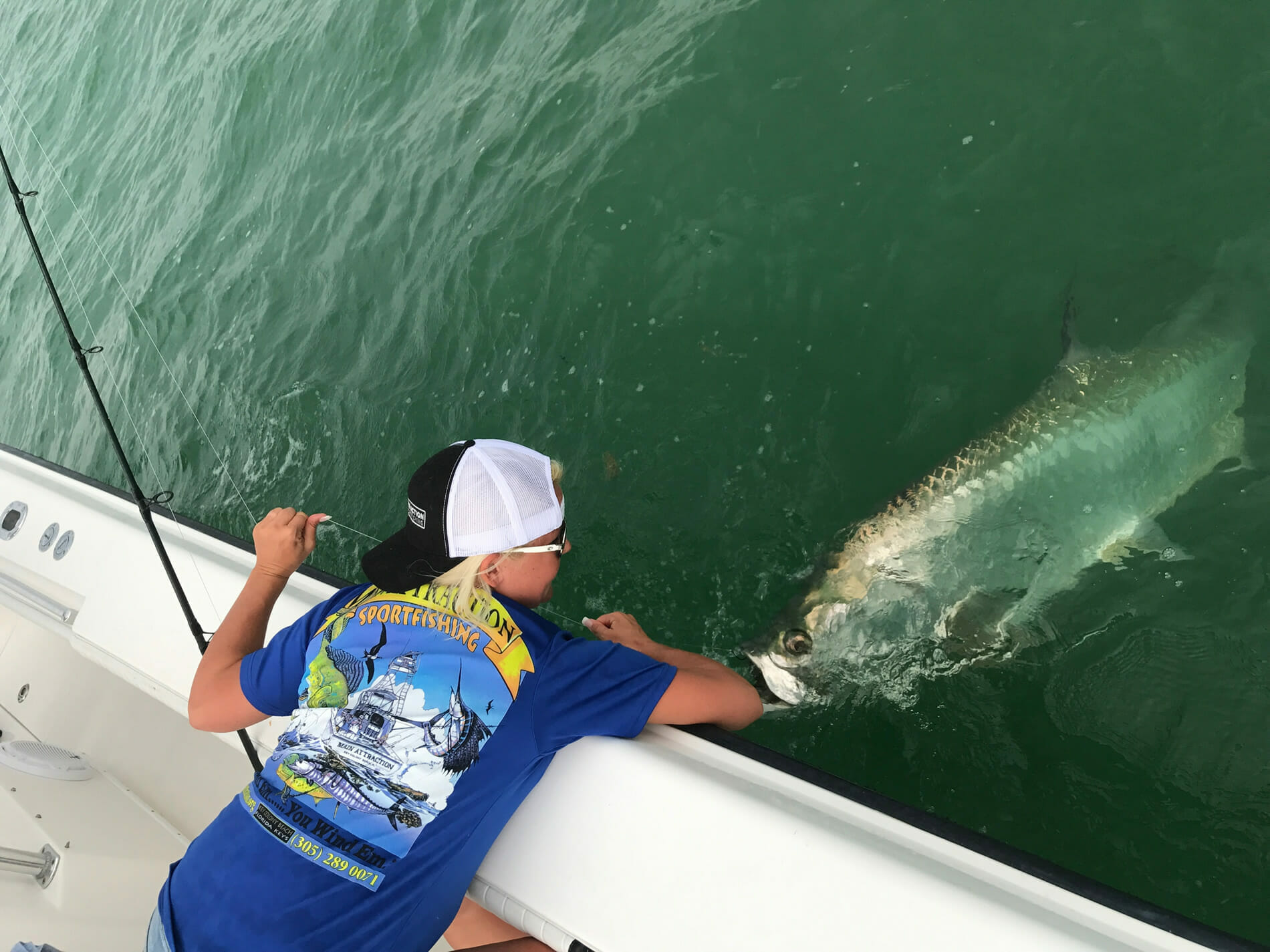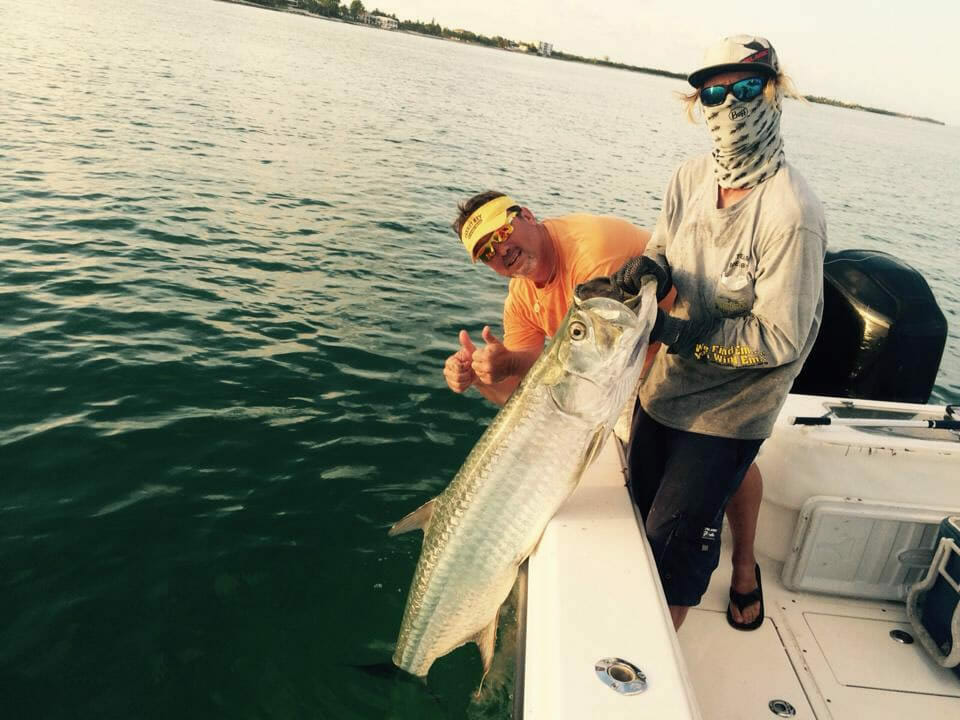Florida Keys 2019 Tarpon Season
Its that time of the year again in the Florida Keys, where the waters start to warm up and boats start to show up under bridges in the early mornings and late evening, in search of the Silver King, better known as Tarpon. Tarpon fishing is best in April through August in the Florida Keys. While there are Tarpon that will stay in the Keys year round, the spring and summer months include massive schools made up of tens of thousands of migratory Tarpon stopping by to feed and spawn. This event creates some fantastic opportunities to do battle with these beautiful fish that have roamed the ocean since prehistoric times.
Tarpon are best known as a trophy or sport fish, as the thrill of fighting a single fish can last hours depending on their size, and because they are not typically harvested for food. Tarpon can grow to well over 200lbs and it is not unusual for us to hook them in the 70lb – 150lb range on our Tarpon charters. When you land a tarpon, you must revive the fish and release it, unless you have a special permit to keep it as a Trophy. These kill tags are not really necessary these days as you can purchase a fiberglass replica mount of your fish with a quick measurement without killing the Tarpon. Because of these reasons and the fact that it takes 50-60 years for these fish to grow to full size, Main Attraction practices a catch, photo, and release policy with Tarpon.
When bridge fishing, Tarpon typically strike best on live mullet and crab. Knowing which baits work under which bridges will always give you the best results when Tarpon fishing. We always use circle hooks for Tarpon fishing, so instead of setting the hook with fish such as you might with a Mahi, when you get a tarpon bite, you just want to REEL as fast as you can. Once the fish is hooked, our Captain will assess the situation. If the fish is jumping and swimming away fast, the Captain may choose to release his anchor on a buoy to retrieve it later and chase down the fish. When you fish the bridges, it can be tricky. Maneuvering in and out of the bridge piling and around other boats anchor lines, trying to avoid getting cut off is always a challenge.
Besides using their gills to breathe, Tarpon also have the unique ability to gulp air from the surface. While tarpon fishing, you may see the fish “roll”, meaning they are coming up to the surface and getting a gulp of air. When you see Tarpon rolling all over the place around your boat this is usually a very good sign a bite is coming! Tarpon are usually very active when they are hooked and jump high up, sometimes somersaulting and often shaking their heads back and forth to throw the hook. It is best to “bow to the king” as a hooked Tarpon jumps in the air, lowering your rod to create slack during the jump instead of putting added pressure on it. Tarpon have extremely strong “concrete like” mouths, so it is not uncommon to have a fish spit the hook immediately after a bite is had.
Mastering the technique of keeping the line tight except for the moment they are airborne is the first challenge of the battle. After that it is a battle of wills, to see who will tire first, you or the fish! If you plan to visit the Florida Keys in the next few months and wish to experience firsthand the challenge and excitement of battling these amazing fish call us at 305-289-0071 or fill out our contact form.

